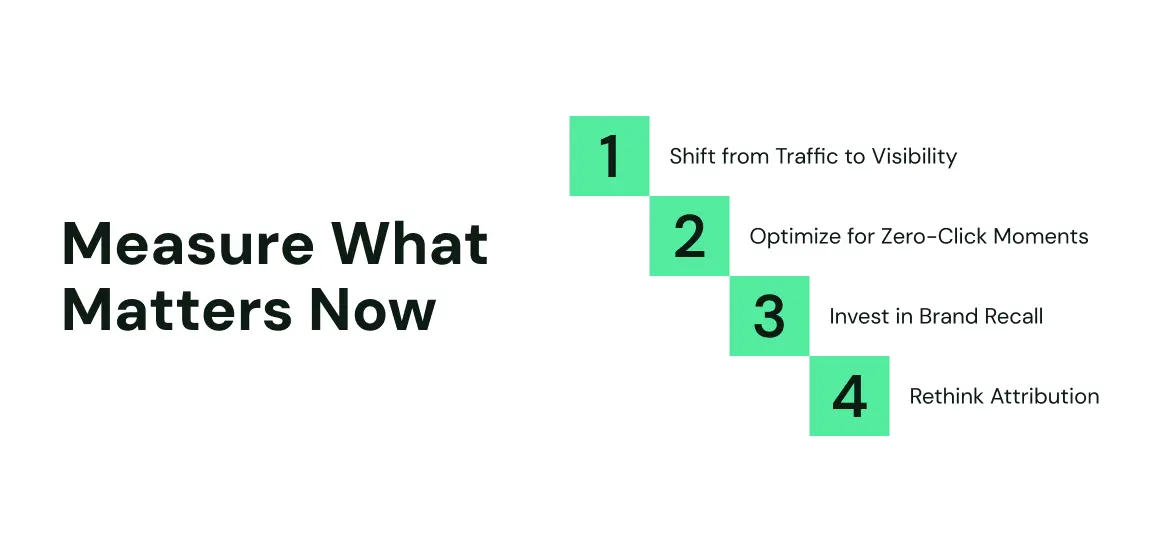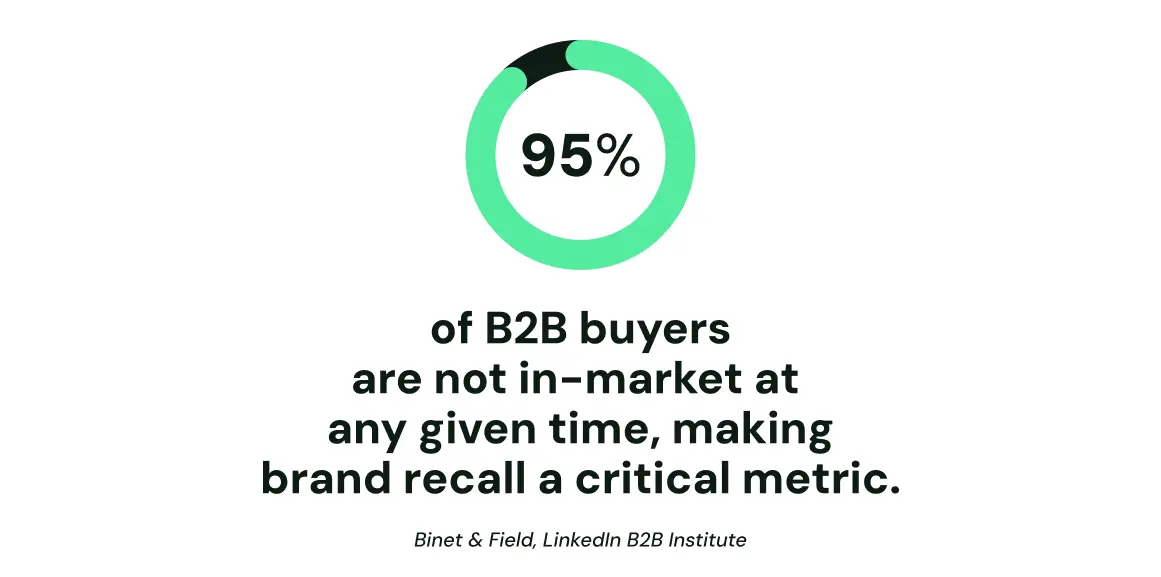September 12, 2025
|5 minute read

Key Takeaways
Create content for humans and algorithms. Think in answers, not articles.A growing frustration is simmering in B2B marketing departments. Investments are made in high-quality content, technical SEO is mastered, and rankings are won, yet the clicks don’t come.
Google’s AI Overviews, featured snippets, and knowledge panels are swallowing hard-won traffic.
Zero-Click Isn’t the Problem—Your Metrics Are
Clicks don’t equal influence. Traffic doesn’t build trust. In an AI-dominated SERP, visibility beats vanity.
Here’s the difficult truth the industry must confront: the problem isn’t zero-click search—it’s the stubborn, decade-old fixation on clicks as a meaningful measure of success.
For years, the prevailing assumption was that getting a user to a domain was the primary goal.
However, the landscape has fundamentally shifted.
Recent data shows that around 60% of Google searches end without a click [1]. With the rise of AI Overviews, this trend has intensified.
Another recent study found that the average position one click-through rate (CTR) for AI Overview keywords dropped from 0.073 to 0.026, representing a 34.5% decline. [2]
If your content strategy still rests on acquisition metrics from 2015, AI didn’t break your model—it exposed it.
Most B2B marketing funnels haven’t fundamentally changed since the early days of inbound marketing. Marketers still talk in terms of TOFU, MOFU, and BOFU—rigid, stage-based frameworks that assume a buyer will dutifully click their way down a pre-designed path.
Success is tracked in page views and MQLs generated from gated content, clinging to a linear model of a world that is anything but.
The modern buyer, especially in a complex enterprise tech sale, isn’t on a linear journey.
As research from firms like Boston Consulting Group confirms, today’s buyer researches across dozens of tabs, asks questions in private Slack communities, and gets answers directly from search results without ever visiting a company website [3].
Zero-click reveals a truth that has been largely ignored:
Marketers don’t control the buyer journey anymore—algorithms do.
Google itself admits its algorithm is optimizing for searcher/user satisfaction, not website traffic [4].
The key is to unlearn the attachment to acquisition metrics and embrace visibility, recall, and influence.
Content isn’t abandoned; it’s elevated.
A fundamental rethinking is required of what content is for and how its true value is measured in a world where the SERP itself is the new battlefield for brand influence. This is the core of a new discipline: Answer Engine Optimization (AEO).

The goal is no longer to be the #1 blue link. It’s to be the answer, wherever it’s displayed. This means shifting the primary KPI from Click-Through Rate to Share of SERP.
Start tracking a brand’s presence in featured snippets, AI-generated summaries, “People also ask” sections, and image and video carousels.
Dominating these surfaces builds brand familiarity and authority, even without a visit.
How to Do It: Structure content for machine readability. Use clear, question-based headings (H1- H3). Place concise, definitive answers directly below the heading, making it effortless for an AI to parse and feature the content with a citation.
Marketers must learn to provide valuewithin the search results page. Content should be viewed less as an article and more as a database of credible, citable answers.
How to Do It: This is where technical SEO becomes strategic. Aggressively use schema markup. Implement the FAQ Schema to capture “People also ask” spots. Use How-To Schema for step-by-step guides. This isn’t just about keywords; it’s about using structured data to tell Google, “The answer is right here.”
If a user sees a brand cited in an AI Overview, gets their answer, and leaves, the analytics dashboard shows nothing. But did the strategy work? Yes—if it built brand recall.
A landmark LinkedIn B2B Institute study showed that 95% of buyers are not in-market at any given time—meaning recall is what ensures you’re chosen when they are [5].

How to Track It: The most powerful metric in the zero-click era is branded search lift. Correlate on-SERP optimization efforts with subsequent increases in users searching for a brand by name. Supplement this by asking on demo forms, “How did you hear about us?”
The buyer journey has gone “dark”; qualitative data is needed to light it up.
A 2025 analysis notes that single-touch attribution fails to capture the complexity of multi-stakeholder, multi-channel B2B journeys, leading to inaccuracies in measuring true impact. [6]
What to do about it? Shift focus from last-touch attribution to influence-based models. Use CRM reporting to map how many accounts that eventually close had early touchpoints with content on the SERP.
Prioritize platform-agnostic metrics like branded search volume and direct traffic, which often serve as lagging indicators of successful on-SERP branding.
This isn’t the end of search; it’s the end of lazy search strategies. The winners will be the marketers who stop fighting the current and learn to navigate it.
In a zero-click world, the goal isn’t just to be read—it’s to be referenced. It’s to become the source that machines cite, buyers remember, and competitors follow. That isn’t about gaming an algorithm; it’s about earning genuine authority.
It’s time to stop mourning lost traffic. The real loss would be failing to adapt.
Works Cited
Please enter your email address so we can send you a one-time pass code and verify if you are an existing subscriber.